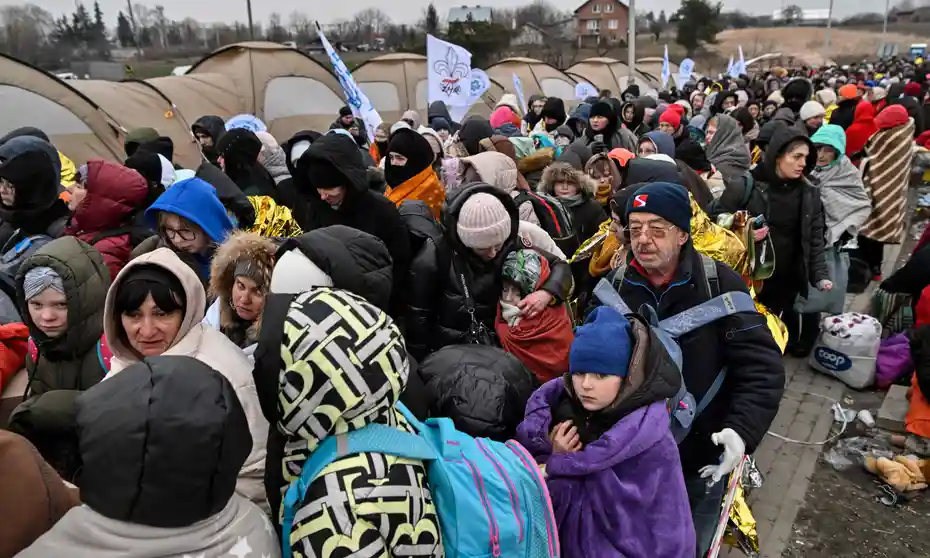
Beyond the Battlefield: What Might Happen next in the Ukraine Crisis
Source: Jakes, L (24, February 2022). Beyond the Battlefield: What Might Happen Next in the Ukraine Crisis. New York Times.
Europe is facing a new refugee crisis with the recent attacks in Ukraine. Russia’s acts of aggression have forced several thousand Ukrainians to flee from their homes to other parts of Europe, the majority traveling to Poland and Moldova in just the first 48 hours of the invasion. Estimates predict that up to millions of refugees will be at Europe’s doorstep in the coming months. These numbers vary considerably across different media outlets as no one is certain of the impact of this ongoing crisis. An article published by The NY Times, called “Beyond the Battlefield”, explains that many neighboring countries have prepared for the large influx of refugees at their borders. There is a serious need for global financial aid as countries such as Poland will be severely affected by these migrant flows. “The United Nations has appealed to the international community to raise $190 million this year to help Ukrainians, although only 9% of that has been raised”. Without sufficient funding to support these migrants, countries taking on the majority of this influx will face a significant economic downturn by having to stretch their resources too thin. There is much still that is unknown, but looking at economic models, we can speculate the kinds of impacts this situation will have on countries like Poland, which has pledged to take up to one million Ukrainian refugees amidst this crisis.
Assuming the possibility that the situation in Ukraine does not improve in the coming years, these refugees will need to find a way to start a new life. If neighboring countries take an approach like Colombia has done with the Venezuelan migrant crisis and give these refugees temporary protected status, Ukrainians would be able to live and work legally in Europe. Over time, immigrant workers could raise their income to the level they earned in their home country or more even. In the beginning, the financial burden of accepting Ukrainian refugees will need to be held by more than these countries alone if they are to survive this crisis, however, this large influx in the labor force could turn out to be highly advantageous to these economies, in the long run. It is evident that the longer immigrants stay in a destination country, the closer they get to closing the pay gap between migrants and natives. This 2022 cohort of Ukrainian refugees will have a huge impact on European economies: whether its imprint is an overall good depends on the support of the global community.
2 thoughts on “Beyond the Battlefield: What Might Happen next in the Ukraine Crisis”
The Ukrainian refugee crisis is a timely impact that is affecting the global economy. Poland is especially sensitive to the crisis due to sharing a border of 535 km in length. Refugees tend to flee to neighboring countries– similar to the Venezuelan and Colombia reference which places these border countries in a position to receive more refugees as opposed to other countries more distant from crises. Having previously studied the implication of proximity to the refugee crisis, it is difficult to assess the role of bearing the burden and economic support for refugees in terms of humanitarian need from wealthy countries that do not face mass amounts of refugees entering based on their distance from the crisis. Cara raises some interesting questions on support for the global community and the long-run destination country wage effect. Interesting post!
Great article and analysis on how the influx of Ukrainian refugees will have an impact on EU countries’ economies. In another post, Caroline talked about how EU countries are treating Ukrainian refugees differently from how they responded to Syrian refugees years ago. I did some research on this and found that EU countries actually had great sympathy for Syrian refugees at the beginning, but because of the number of refugees influx, they soon turned their hospitality to hostility. Since this time can be different as most of the Ukrainian refugees are women are children (men between the age of 18 and 60 are not allowed to leave the country), it would theoretically bring more downturn pressure to the EU countries’ economies. And in the long run, when negative economic effects appear in Europe, it would still be hard to determine how much support can those refugees still receive.